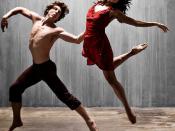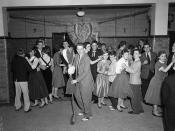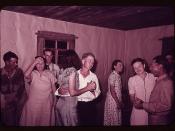Dance: The History of Its beauty The art of dance goes far beyond merely traditional forms and choreographing. Movement is the source and condition of life. Rhythmic beats and music are frequently used with dancing as aid and incitement, but it is a independent art and dancing can move us, excite us, and it also reveals the aspects of life and human emotion as we see it (Hayden 2). Many people think of art as something special and apart from their daily lives. Men and women cannot live without art. It is necessity, as religion is. If men and women cannot communicate, they die of loneliness (Anderson 12). Art is communication on the deepest and most lasting levels. I think all of us need to tell what is in our hearts; most of us manage to say what we really mean only at three or four high moments in our lifetime (1).
Great art out lasts life, conditions, inventions, and all the changing circumstances of the world. The miracle is that dances move us and our lives, because it is also the oldest art. Before you can do anything, you must draw breath, and move (2).
It is not known when people began to dance; however, because expressive movement is so spontaneous, because dance is almost universal, and because it is so intimately interrelated with other aspects of a culture, it is possible that dance developed along with the evolution of our species. Many animals perform dance like movement rituals, however, lack the conscious use of symbols that is present in human dance (Demille 13). Similar to human courtship and play. Prehistoric cave paintings from more that 20,000 years ago depict figures in animal costumes which seem to be dancing, possibly in hunting or fertility rituals, or perhaps merely for...


